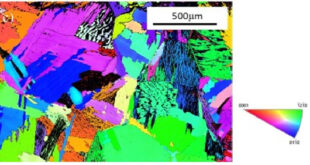Significance
Structural safety has become a crucial consideration in the design and operations of different structures. Through structural health monitoring (SHM), different systems can be observed and analyzed periodically to monitor changes in the geometric and material properties that may cause damages. Recent advances in signal processing and non-destructive testing (NDT) technologies have significantly contributed to structural health evaluation and monitoring which is critical in enhancing the safety and functionality of structures. Today, several SHM and NDT techniques have been developed to detect structural damages for appropriate actions. Among them, the acoustic emission (AE) technique has drawn significant research attention owing to its capability to detect damages in real-time and without approaching them. To this end, the AE technique has been investigated for potential application in damage localization, evaluation, and monitoring of various structural components.
SHM process entails several steps, including damage localization. Over the past decades, the development of AE techniques has progressed well, making it one of the most used techniques in engineering. Generally, accurate AE source localization based on the time difference of arrivals (TDOA) method requires accurate arrival time and wave propagation speed which have been achieved using various approaches. Unfortunately, most of these approaches focus on single AE source localization that is inapplicable to some scenarios. For multiple structural damages, for example, the sensors sense different source signals due to the simultaneous generation of AE waves. Thus, the sensors pick distorted arrival times that limit the accuracy of the TDOA method. Consequently, the application of intelligent diagnostic methods is complicated and expensive.
A combination of beamforming and singular value decomposition processes has been identified as a promising approach for solving the challenges associated with the localization of simultaneous AE sources. Inspired by the results of the previous attempts, Mr. Junfei Tai (PhD student), Professor Xiandong Liu, Dr. Xiaoran Wang, Professor Yingchun Shan and Professor Tian He from Beihang University proposed a novel adaptive localization method based on an energy filtering algorithm for simultaneous AE sources. Based on the analysis of the adaptive notch-wave theory and the propagation properties of the AE waves, the frequency-domain notch-weighted beamforming was derived. The localization effects of this method were studied using the simulation data of AE signals emitted with different energies and at different positions. The feasibility of the proposed approach was verified through simulation and pencil-lead-breaking experimental tests on a steel plate. The aim was to improve the localization process to enhance the results. The work is published in the research journal, Mechanical Systems and Signal Processing.
The findings also demonstrated the effectiveness of the proposed approach in localizing the two AE sources with improved accuracy in ordinary conditions. The theoretical assertions were verified experimentally. The authors observed the weaker AE source after the stronger source had been filtered out. The weaker and stronger sources also exhibited a significant difference in energy between them. In addition, the proposed method proved to be effective for all positions associated with the AE sources, such as parallel or perpendicular relationships between the sensory array line and that of the two AE sources. Furthermore, the authors noted the difficulty in identifying two AE sources with huge differences in energy.
In summary, a frequency-domain notch-weighted beamforming algorithm is proposed for the accurate and convenient localization of two simultaneous AE sources. The feasibility and practicability of the proposed approach were successfully verified through numerical simulation and experimental tests, showcasing its effectiveness in localizing two simultaneous AE sources. In a statement to Advances in Engineering, Professor Tian He noted that the study findings would contribute to the design of a more robust AE localization technique for advanced SHM.






Reference
Tai, J., Liu, X., Wang, X., Shan, Y., & He, T. (2021). An adaptive localization method of simultaneous two acoustic emission sources based on energy filtering algorithm for coupled array signal. Mechanical Systems and Signal Processing, 154, 107557.
 Advances in Engineering Advances in Engineering features breaking research judged by Advances in Engineering advisory team to be of key importance in the Engineering field. Papers are selected from over 10,000 published each week from most peer reviewed journals.
Advances in Engineering Advances in Engineering features breaking research judged by Advances in Engineering advisory team to be of key importance in the Engineering field. Papers are selected from over 10,000 published each week from most peer reviewed journals.



